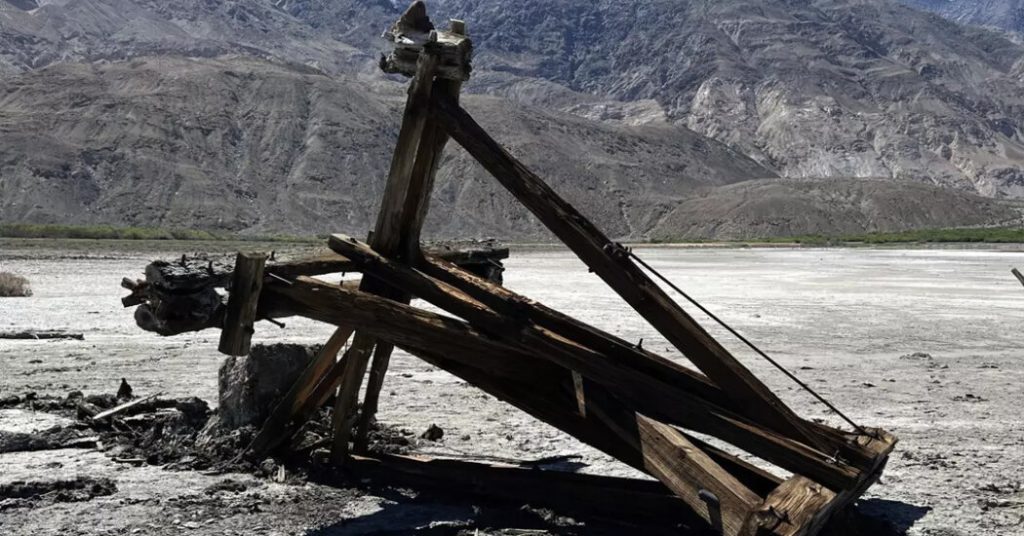A century-old timber-and-iron tower in Death Valley National Park, California, which once supported a tram transporting salt across the Inyo Mountains, was toppled in April after being used in an attempt to pull a pickup truck out of the mud. The incident prompted an investigation by the National Park Service to determine who was responsible for the damage. Following a request for information from the public, the Park Service received numerous calls and messages, eventually leading to a confession from a park visitor who claimed responsibility for the damage. The individual explained that they were in a desperate situation while stuck in the mud.
The video footage of the incident, published by Outside magazine, showed a white pickup truck partially submerged in mud with its tires spinning in place. The person involved used the tower as an anchor to try to free the pickup, causing the deteriorated tower to collapse. The structure, one of the four remaining of the original 20 built to support the tramway, had been damaged over the years by extreme temperatures and saltwater exposure in the desert. Despite the collapse of the tower, the pickup was eventually removed using a winching method involving another vehicle.
The salt flats around Badwater Basin in Death Valley National Park are known for their harsh environment, which is not conducive to most forms of plant and animal life. The fragile salt crystals of the area can easily be crushed underfoot. The fallen tower was part of a 13-mile aerial tram built in 1911 by the Saline Valley Salt Company to transport salt from the Saline Valley over the Inyo Mountains to the Owens Valley. The tramway, considered an engineering marvel, climbed over 7,000 feet at vertical grades of up to 40 degrees, making it one of the steepest tram systems in the United States at that time.
The construction of the tramway involved transporting a million board feet of lumber and 600 tons of iron over challenging mountain terrain using horses. Despite its impressive engineering, the Saline Valley Salt Company was ultimately bankrupted by the project, which ceased operations in 1930. By 1974, when the Park Service nominated the tramway for inclusion in the National Register of Historic Places, much of the original construction materials had been scavenged. However, several towers remained standing, some still holding steel buckets attached to cables over deep canyons.
The Park Service revealed that a stabilization project for the four remaining towers had been planned prior to the collapse of the tower, using funds allocated through the Inflation Reduction Act. It was uncertain whether these funds could now be used to re-anchor the fallen tower. The agency announced that a damage assessment was underway, and plans were being made for the responsible restoration of the salt tram. Superintendent of Death Valley National Park, Mike Reynolds, expressed admiration for the construction of the tramway, highlighting the significant engineering challenges faced by those who built it. The incident serves as a reminder of the importance of preserving historic structures in fragile ecosystems such as Death Valley National Park.


